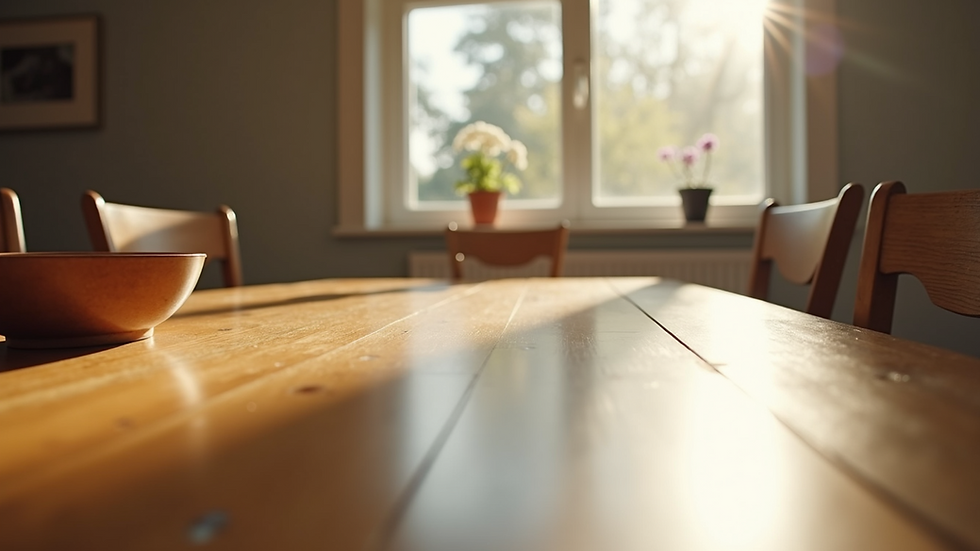Exploring the Essence of Scandinavian Interiors: A Comprehensive Guide to Origin, Meaning, and Seamless Integration
- Jignesh Shah
- May 31, 2025
- 4 min read
Updated: Jun 6, 2025
Scandinavian interiors have surged in popularity, appealing to those seeking clean lines, minimalism, and functionality. This design style is more than just a trend; it is a reflection of a way of life rooted in simplicity and a connection to nature. In this post, we will explore the origins of Scandinavian design, the principles that define it, and practical tips for infusing its essence into your own spaces.
The Origins of Scandinavian Design
Scandinavian design emerged in the early 20th century, primarily within Sweden, Denmark, Norway, and Finland. It arose as a reaction to the elaborate styles of the 19th century, favoring simplicity and practicality.
The 1930s marked a significant turning point with the formation of the Scandinavian Design Movement, inspired by the Bauhaus philosophy, which aimed to unify art and industrial design. Icons like Alvar Aalto, Hans J. Wegner, and Arne Jacobsen crafted timeless pieces that celebrated natural materials and craftsmanship.
One defining moment in this movement was the Stockholm Exhibition of 1930, which showcased functional yet beautiful everyday designs. This event confirmed the importance of aesthetics in utility, influencing not only Europe but also setting a global standard for modern design.
The Meaning Behind Scandinavian Interiors
At the heart of Scandinavian interiors is the philosophy of "less is more." This style emphasizes simplicity, light, and a deep connection to nature. Here are the five key features that characterize this aesthetic:
Natural Light: The long winters of Scandinavia inspired a deep commitment to natural light. Homes often feature large windows and open spaces that create an airy, bright environment.
Functional Minimalism: Every piece of furniture serves a purpose. Clutter is minimal, allowing for comfortable and practical living spaces.
Neutral Color Palette: Popular colors include soft whites, grays, and muted beiges. These shades help establish a serene atmosphere, elevated by the use of natural materials.
Connection to Nature: The integration of materials like wood, stone, and plants fosters a warm environment and invites the outdoors inside. For example, using locally sourced wood can add authenticity to the design.
Craftsmanship and Quality: Scandinavian design values durable materials and expert craftsmanship. Many pieces are made to last, with timeless appeal that withstands fleeting trends.
Blending Scandinavian Style into Your Spaces
Incorporating Scandinavian design into your home can feel overwhelming, but starting with a few straightforward tips can help you achieve a harmonious look.
Start with a Neutral Base
Begin by painting your walls in soft whites or light grays. A neutral backdrop acts as a canvas, allowing furniture and decor to stand out without overwhelming the space.
Invest in Functional Furniture
Select furniture that pairs style with functionality. Look for pieces with clean lines and natural materials. For instance, a Scandinavian mid-century sofa or a simple wooden dining table can beautifully enhance your space. According to recent data, homes that prioritize functional design increase overall satisfaction among occupants by 30%.
Embrace Natural Elements
To achieve that airy Scandinavian feel, incorporate natural materials. Consider wooden furniture, wool blankets, and stone decor to add warmth and texture to your rooms.

Maximize Natural Light
Maximizing natural light is key. Use sheer curtains that filter light while keeping your space private. Mirrors strategically placed can bounce light across the room, enhancing brightness.
Add Cozy Textiles
Layering textiles such as throws and cushions increases comfort. Select materials like wool and linen in simple patterns. This approach not only adds warmth but also retains a minimalist style.

Incorporate Greenery
Plants are vital in Scandinavian interiors, bringing life and vibrancy. Use simple pots to display plants, choosing varieties that complement your decor. Studies show that having plants in your home can reduce stress by 20%, enhancing your overall wellbeing.
Simplify Accessories
When selecting decor, remember that less is more. Opt for a few statement pieces that reflect your personality, like an appealing artwork or a unique sculpture. Avoid overcrowding surfaces to keep your space serene.
Scandinavian Design in Different Spaces
Living Rooms
Scandinavian living rooms often boast open layouts with a comfortable, large sofa as the focal point. Minimal decor allows for easy transitions into other spaces. A plush rug and a few selected artworks can elevate the room.
Kitchen Spaces
Scandinavian kitchens are renowned for their functionality. Opt for bright cabinetry paired with wooden elements for warmth. Keeping countertops organized and clutter-free is essential to maintain a streamlined atmosphere.
Bedrooms
To create a calming bedroom, focus on light, simple bedding and furnishings. Stick to a muted color palette for a tranquil retreat. Soft lighting, such as bedside lamps with warm bulbs, contributes to a cozy environment.
Embracing the Essence of Scandinavian Design
Understanding the beauty of Scandinavian interiors lies in recognizing simplicity, functionality, and nature’s integration. By grasping its origins and core principles, you can craft living spaces that resonate with this timeless style.
Whether you revamp a full room or simply introduce key elements, the elegance of Scandinavian design can transform your home into a welcoming sanctuary.
Remember, the most crucial factor in any design approach is personal preference. Scandinavian design provides a versatile framework, but the true beauty emerges when your style shines through.
With these practical insights, you are prepared to explore Scandinavian interiors and incorporate their essence into your own living spaces. Embrace minimalism, and let your home reflect elegance and tranquility.

Discover how Scandinavian interiors can elevate your living spaces and bring warmth and beauty to your home.



Comments